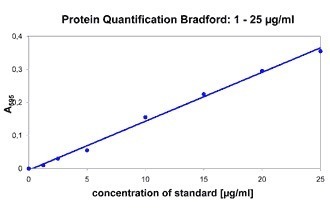NanoPhotometer® Dilucell 10
Diluphotometer™ OD600
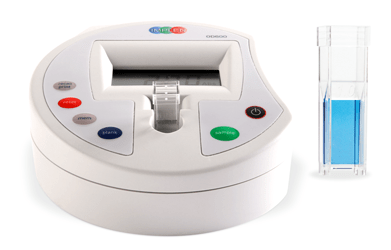
The OD600 DiluPhotometer™ has been designed for the spectrophotometric analysis of bacterial and yeast growth rates and the quantification of proteins at a wavelength nearby 600 nm (e.g. Bradford). The instrument is battery operated and can be easily transported for usage in incubation cabinets and under anaerobic conditions. The batteries last for almost 1 month when fully charged. A 600 nm LED source in combination with a fiber optic is used to obtain the optical density measurement. Spills can be easily wiped from the surface, and the cell compartment area can be rinsed with, formaldehyde or ethylene oxide to sterilize it.
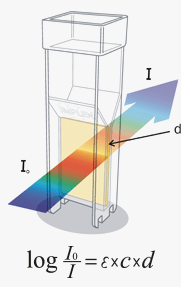
Lambert-Beer-Law
The Lambert-Beer-Law, also known as Beer’s Law, empirically relates the absorption of light to the properties of the sample. This law states that there is a logarithmic relationship between the transmission of light through a specific sample (T = I/Io with I = outgoing light and Io = incoming light), the molar extinction coefficient for a specific compound (ε), the concentration of the absorbing species in the material (c) and the distance the light travels (d). By leaving all conditions constant but changing the pathlength (distance the light travels), you can bend the Beer-Law to get an automatic dilution of your sample. This principle is realized within the NanoPhotometers® NP80 and C40 as well as DiluPhotometer™ OD600 with DiluCell™.
Automatic Sample Dilution
Previously it was necessary to use standard cuvettes with a volume of at least 1 ml and additionally to dilute the sample manually. DiluCell™ from Implen allows for lower sample volume requirements and provides automatic virtual sample dilution. Due to the unique design of DiluCell™ cuvettes, the light-path is reduced from the standard 10 mm to 1.0 mm (DC 10). According to the Lambert Beer Law, this shortened pathlength results in an automatic sample dilution by factor 10 (DC 10). Automatic dilution with DiluCell™ saves time and excludes dilution errors and cross contaminations for OD600 measurements.
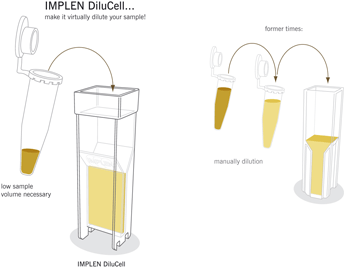
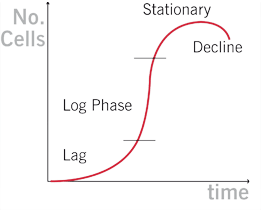
Measuring Cell Density
The stage of growth of a bacterial culture needs to be monitored to ensure that the cells are harvested at the optimum point (towards the end of log phase) for the greatest density of live cells. The optical density of the sample indicates when this point has been reached. This value varies dependent on the cells being grown. Routinely cells are grown until the absorbance at 600 nm, also known as OD600, reaches approximately 0.4 prior to induction or harvesting. A linear relationship exists between cell number (density) and OD 600 up to approx. 0.6.
Protein Quantification with Bradford Assay
The Bradford Assay is a rapid and accurate method used to determine the total protein concentration of a sample by quantifying the binding of a dye, Coomassie Brilliant Blue G-250, to an unknown protein. The assay is based on the observation that the absorbance maximum for an acidic solution of Coomassie Brilliant Blue G-250 shifts from 465 nm to 595 nm when binding to protein occurs. By comparing this binding to that of different, known concentrations of a standard protein, the concentration of the unknown protein can be calculated. Standard curves with bovine serum albumin (BSA) are given as an example.
